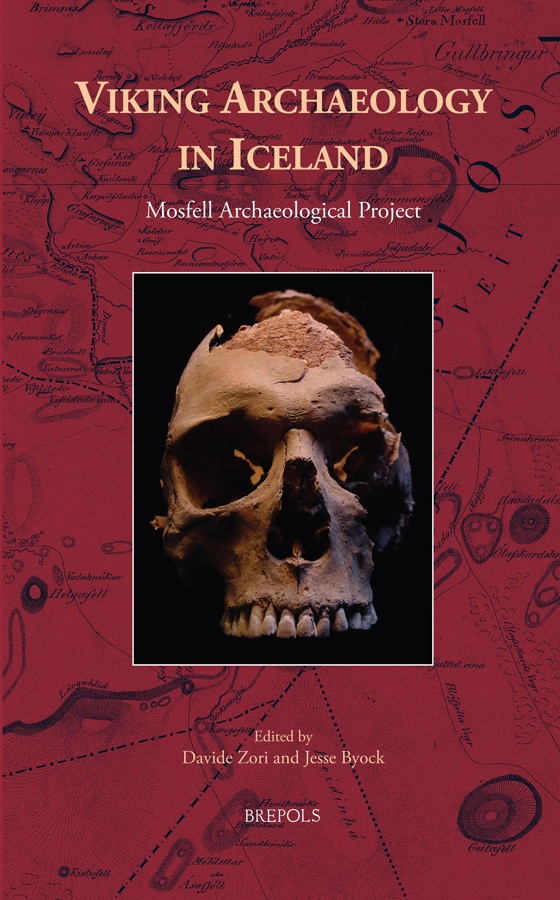
- Pages: xxvi + 256 p.
- Size:216 x 280 mm
- Illustrations:83 b/w, 10 col., 28 tables b/w., 17 maps, 23 graphs
- Language(s):English
- Publication Year:2014
- € 145,00 EXCL. VAT RETAIL PRICE
- ISBN: 978-2-503-54400-7
- Paperback
- Available
- € 145,00 EXCL. VAT RETAIL PRICE
- ISBN: 978-2-503-54421-2
- E-book
- Available
"It is a pleasure to note that the report is unusually well-written, and proves an engaging guide to a vanished world of high-status farmers at the European fringe. (...) the volume is a truly worthy contribution to Viking studies in general and Icelandic archaeology in particular, and will be keenly read (...) by any student of settlement in the North Atlantic." (Neil Price, in: The Medieval Review, 15.06.08)
"(...) the overall experience will provide valuable, sometimes novel, and often stimulating insights into an important site and the early centuries of settlement in Iceland." (John Kennedy, in: Parergon, 32.1, 2015, p. 288-289)
“The project is interdisciplinary and multi-disciplinary on an impressive scale, incorporating archaeology, history, saga studies, osteology, zoology, palaeobotany, genetics, isotope analysis, toponymy, environmental science and historical architecture. The levels of technical expertise, the attention to microscopic detail and the methodological sophistication of interpretation are all of the highest conceivable order (…) For having given so much to Viking studies, the editors and publishers deserve our fullest expression of gratitude.” (Howard B. Clarke, in Early Medieval Europe, 26/1, 2018, p. 125)
The Viking North Atlantic differs significantly from the popular image of violent raids and destruction characterizing the Viking Age in Northern Europe. In Iceland, Scandinavian seafarers discovered and settled a large uninhabited island. In order to survive and succeed, they adapted lifestyles and social strategies to a new environment. The result was a new society, the Icelandic Free State.
This volume examines the Viking Age in Iceland through the discoveries and excavations of the Mosfell Archaeological Project (MAP) in Iceland’s Mosfell Valley. Directed by Professor Jesse Byock with Field Director Davide Zori, MAP brings together scholars and researchers from Iceland, Britain, Canada, Denmark, Norway, Sweden, Germany, and the United States. The Project incorporates the disciplines of archaeology, history, saga studies, osteology, zoology, paleobotany, genetics, isotope studies, place-names studies, environmental science, and historical architecture. The decade-long research of MAP has led to the discovery of an exceptionally well-preserved Viking chieftain’s farmstead, including a longhouse, a pagan cremation site, a conversion-era stave church, and a Christian graveyard.
The research results presented here tell the story of how the Mosfell Valley developed from a ninth-century settlement of Norse seafarers into a powerful Icelandic chieftaincy of the Viking Age.
Introduction to Viking Age Archaeolog y in Iceland’s Mosfell Valley — JESSE BYOCK and DAVIDE ZORI
Governmental Partnership with the Mosfell Archaeological Project: Past, Present, and Future — BJÖRN THRÁINN THÓRÐARSON
The Mosfell Archaeological Project: Archaeolog y, Sagas, and History — JESSE BYOCK
Egill’s Grave? Archaeolog y and Egils Saga at Kirkjuhóll, Hrísbrú — JON MERLANDSON, JESSE BYOCK, and DAVIDE ZORI
Interdisciplinary Modelling of Viking Age and Medieval Settlement in the Mosfell Valley — DAVIDE ZORI
Infectious Disease in Viking Age Iceland — PER HOLCK
Bioarchaeological Evidence of Stress and Activity in the Medieval Hrísbrú Cemetery in the Mosfell Valley, Iceland — JACQUELINE TENG
Reconstructing Diets and Origins of Vikings at Hrísbrú, Mosfell Valley, Iceland: The Carbon, Nitrogen, and Strontium Isotope Evidence — VAUGHAN GRIMES, BENJAMIN TFULLER, and ERIC JGUIRY
Artefacts from the Viking Age Longhouse at Hrísbrú — SIGRID CECILIE JUEL HANSEN, DAVIDE ZORI, and JESSE BYOCK
Beads from Hrísbrú and their Wider Icelandic Context — ELÍN HREIÐARSDÓTTIR
Interpreting Social Space and Social Status in the Viking Age House at Hrísbrú Using Integrated Geoarchaeological and Microrefuse Analyses — KAREN MILEK, DAVIDE ZORI, COLIN CONNORS, WALTRAUD BAIER, KATE BAKER, and JESSE BYOCK
Viking Age Foodways at the Hrísbrú Farmstead — DAVIDE ZORI, THOMAS WAKE, JON ERLANDSON, and RÚNAR LEIFSSON
Landscape Change, Land Use, and Occupation Patterns Inferred from Two Palaeoenvironmental Datasets from the Mosfell Valley, SW Iceland — EGILL ERLENDSSON, KEVIN JEDWARDS, and GUÐRÚN GÍSLADÓTTIR
The Recovery and Analysis of Macrobotanical Remains from Hrísbrú — STEVE LMARTIN
Viking Age Routes, Landscape, and Power in the Mosfell Region — COLIN GIOIA CONNORS
Viking Age Hedeby and Its Relations with Iceland and the North Atlantic: Communication, Long-distance Trade, and Production — VOLKER HILBERG and SVEN KALMRING
Index




